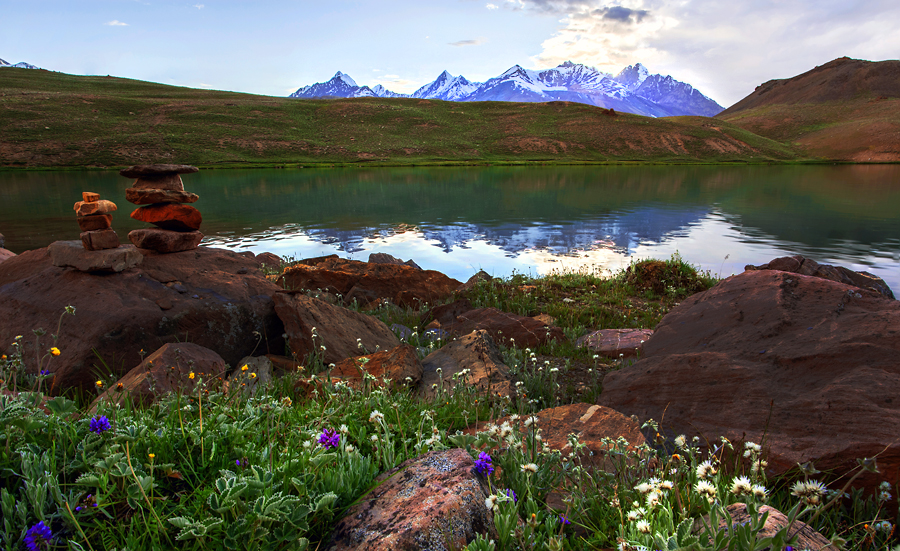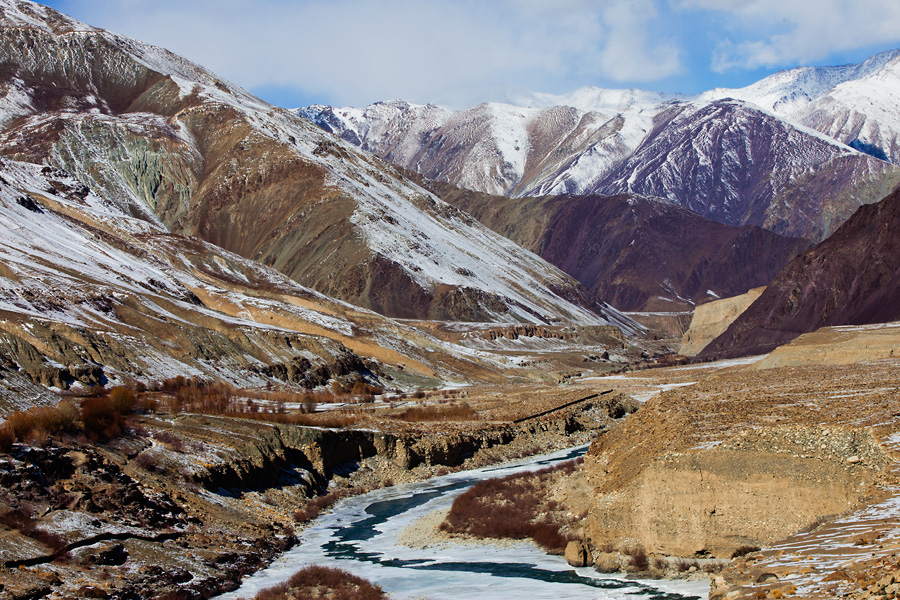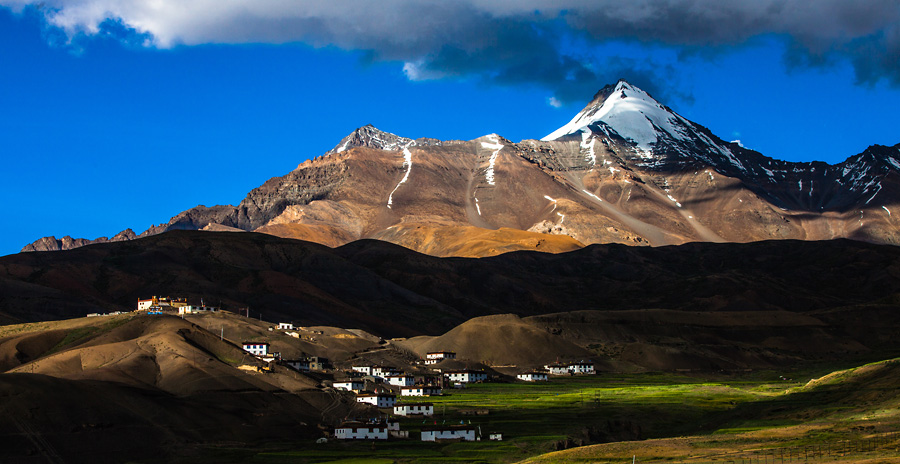Regular readers here know that Chandratal Lake in Lahaul & Spiti Himalayas is a place that I love going back to and photographing. Here is another image of the lake, photographed two weeks ago when I was leading a photography tour to region.

A hundred shades of brown… mountains and a partially frozen Indus River in Ladakh, during winter months.

We were driving by when I saw this bend in the river. I had to stop to photograph this. It required me coming down a steep slope and leaning dangerously to have the river as much towards the center of the frame as possible.
I have travelled to Ladakh in winter months in three occasions in the past. A few stories on Ladakh in winters:

How is it to live in a village at the base of a 20,000 feet high mountain forever covered in snow? How does one endure winter temperatures that can go down to -20C or lower? What is like to be in the company of yaks in summer and snow-leopards in winter? What does it take to survive in such a place for centuries, when modern facilities did not exist? I went to Langza to find answers.

Langza Village, with 6,300m high Chau Chau Kang Nilda Peak in the background.
Langza is no ordinary village. Located above 14,000 feet in Spiti Valley at the crossroads between Tibet and India, where the sun shines strongly over a brown treeless mountainscape in summers, where no rain falls during the monsoons and the winter’s snow can hide your footprints for four months, people have lived for a millennium with little interaction with the outside world. Before the modern world could connect with the people of Spiti, they lived an isolated, nearly self-subsistent life depending on their crop of barley for cereals and livestock for every other needs. They worked hard through the summer months, growing the year’s food and herding their sheep into the high-altitude meadows. The barren winters were for a slower pace of life, for festivities, celebrations and weddings, where barley chang flowed free from a yak-horn cup and the feet moved freely to the rhythm of drums. Only the strongest and the bravest travelled far and wide, to procure salt for the meal and timber for the houses. Everything else was made at home.



